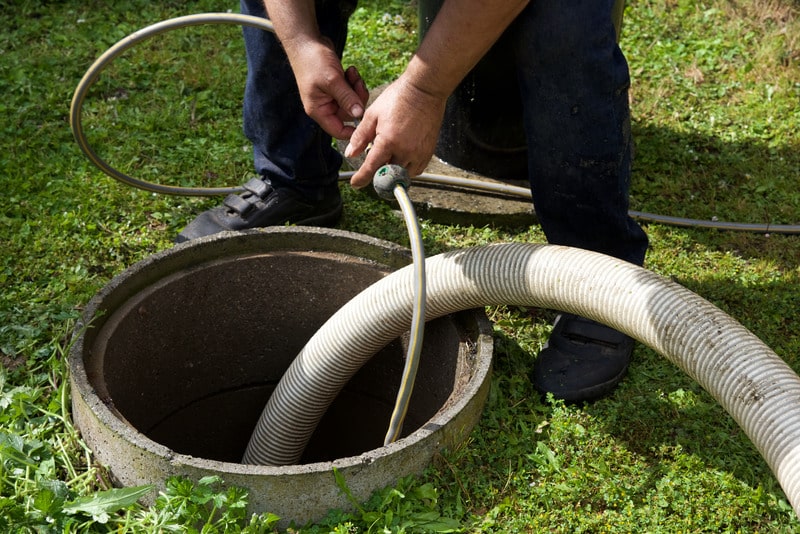Getting The Stillwell Septic And Grading To Work
Stillwell Septic And Grading - The Facts
Table of ContentsSome Known Facts About Stillwell Septic And Grading.9 Easy Facts About Stillwell Septic And Grading ExplainedThe Single Strategy To Use For Stillwell Septic And GradingNot known Details About Stillwell Septic And Grading Not known Facts About Stillwell Septic And GradingThe Greatest Guide To Stillwell Septic And GradingSome Of Stillwell Septic And Grading
Overall, septic system installment is an intricate process that needs careful preparation and execution. Property owners must work with a respectable installment team and recognize neighborhood regulations and needs to make sure that their septic tank operates effectively for many years ahead. After the septic storage tank has been set up and attached to the drainpipe area, it is time to backfill the location.The backfill material should be devoid of clods, big rocks, icy matter, and particles that can cause gaps in the backfill that might permit working out with time. Crushed rock or pea gravel 1/2-inch in size is favored if indigenous materials are not appropriate. As soon as the backfilling is total, it is time to landscape the area.
Once the septic tank has actually been installed, it is vital to check it to guarantee that it is functioning properly (Septic Inspection). http://tupalo.com/en/users/6365179. Testing the system involves looking for leakages, making certain that the container goes to the ideal level, and examining the drainpipe area. Among the most usual tests carried out is the hydraulic lots examination
The Buzz on Stillwell Septic And Grading
The water is then kept an eye on to ensure that it streams properly through the pipes and right into the drainpipe area. If the water does not move appropriately or supports right into the tank, it might show a problem with the system. One more test that is frequently carried out is the dye examination.
The dye is after that kept an eye on to ensure that it moves correctly with the pipes and right into the drainpipe area. If the dye does not move correctly or appears in the wrong place, it may suggest an issue with the system. It is vital to have a specialist do these tests to ensure that they are done appropriately.

Some Known Incorrect Statements About Stillwell Septic And Grading
Here are some vital tips for homeowners to preserve their septic tank: The average family septic tank ought to be examined a minimum of every three years by a septic service professional. The regularity of pumping relies on the dimension of the tank and the number of individuals utilizing it. https://stillwellsag.bandcamp.com/album/stillwell-septic-and-grading. A general general rule is to pump the container every 3 to 5 years
Utilizing water-efficient components and appliances, such as low-flow showerheads and toilets, can reduce water use and help the septic system work more efficiently. Just flush toilet tissue and human waste down the bathroom. Prevent purging anything else, consisting of womanly hygiene products, child wipes, and food preparation grease, as they can clog the system.
About Stillwell Septic And Grading
Septic tank installation is a complicated process that calls for mindful planning and implementation. Homeowners should be mindful of the needed actions involved in the installment process to make certain that their septic tank works correctly and successfully. The very first step is to evaluate the site where the septic tank will certainly be installed.
The dirt type will affect just how swiftly wastewater is taken in and filteringed system. Once the website has been assessed, the following step is to get ready for the installation. This includes obtaining the essential permits and inspections, as well as choosing the best specialist for the work. Home owners have to make certain that their specialist is experienced in septic system setup and will certainly function along with them throughout the process.
The Only Guide to Stillwell Septic And Grading

House owners have to understand the needed actions associated with the setup procedure to guarantee that their septic tank operates correctly and effectively. By complying with these steps and preserving their system, house owners can feel confident that their septic system will certainly supply trusted wastewater therapy for several years to come.
Nearly one in five U.S. homes have septic systems. If you're not correctly keeping your septic system, you're not only injuring the environment, you're placing your family's wellness at riskand may be purging thousands of dollars down the drain!
Everything about Stillwell Septic And Grading

All that added water can truly strain your septic system. This can be practical especially if your system has actually not been pumped in a lengthy time.
All About Stillwell Septic And Grading
Know your system's location. When you have the storage tank pumped, go to my blog attract a diagram or map showing its area in connection to repaired factors - corners of your home, steps, or fencing posts. Ask the pumper to help you situate the drainfield. Note its location on your diagram, along with the area of your drinking water well.
Minimize the quantity of wastewater that have to be treated and disposed of by your system: Clean no more than one or 2 lots of clothing daily. Up to 53 gallons of water flood your septic system with each lots, so it's ideal to spread out washing out over the week.